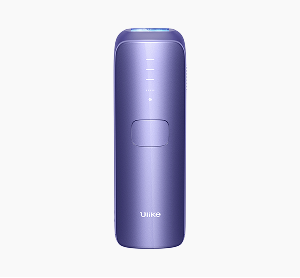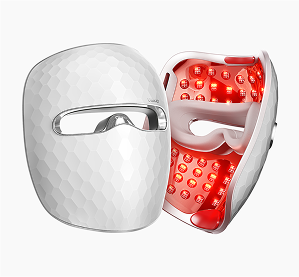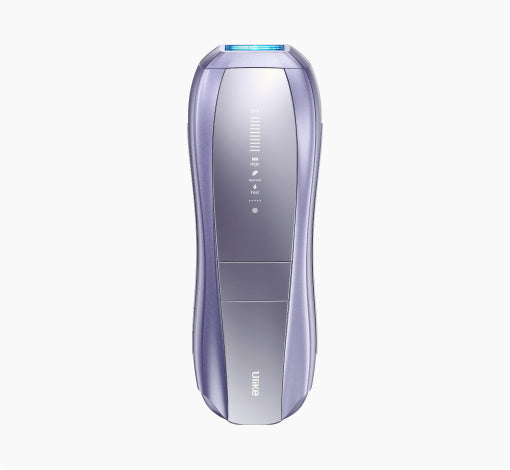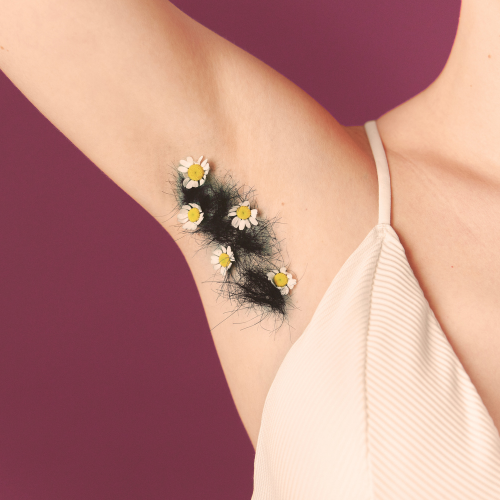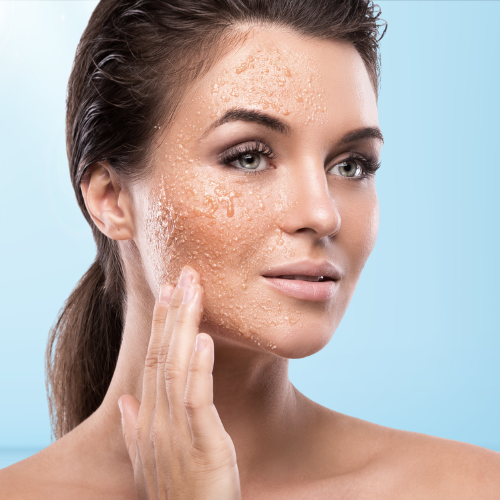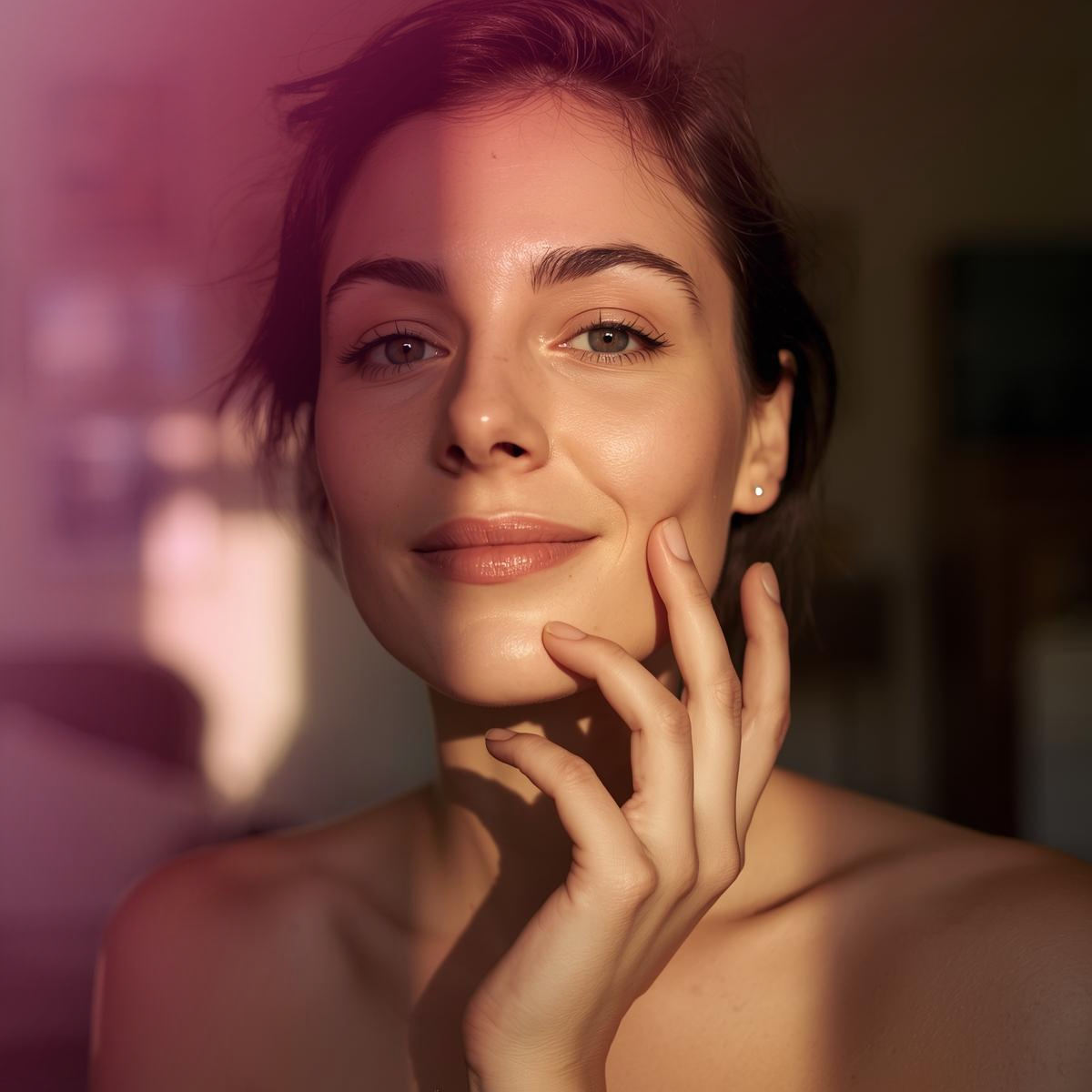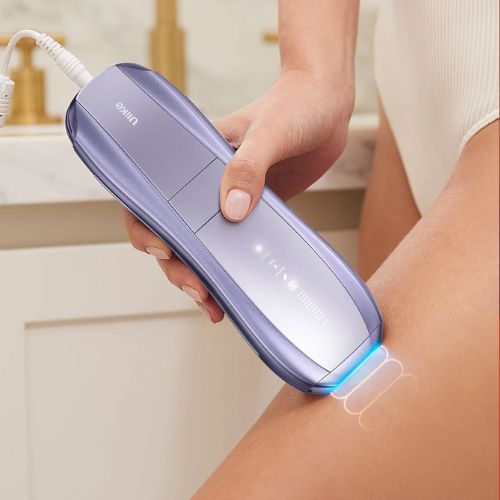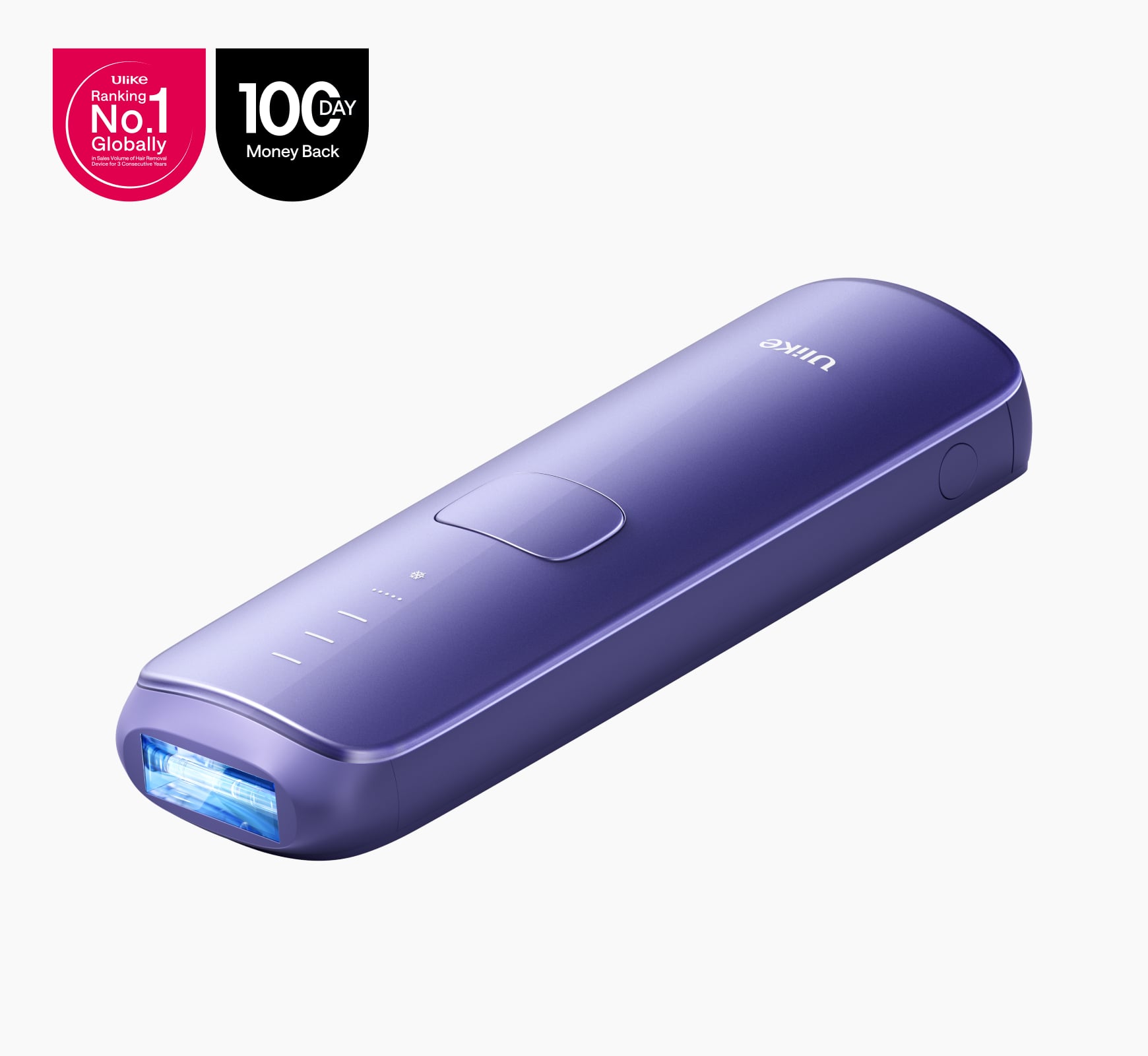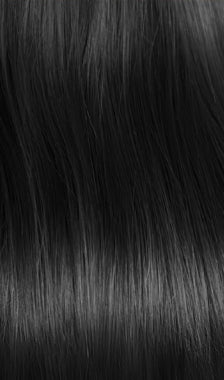
What Exactly Is IPL Laser Hair Removal?
IPL Laser Hair Removal is a technique that many people use to make their hair removal process more manageable. Despite the name, IPL (Intense Pulse Light) is not a true laser. Rather, it is a more broad-spectrum light that heats the pigment found in hair follicles. This light is designed to weaken the hair root over time, to slow its regrowth.
In the United Kingdom, most tend to gravitate towards IPL when compared to full professional laser treatments which tend to be more expensive and less gentle. IPL is safe to be used on the upper lip, chin, jawline, underarms, bikini line, arms, and legs. You can do IPL in a variety of places such as clinics, GP-guided services, or with home devices that are designed for safety and convenience.
Modern at-home IPL devices allow you to keep your skin hair-free and smooth as you are able to do it on your own time in the comfort of your home. These devices have built-in safety systems and cooling systems so they can be effective while remaining gentle, even in more sensitive areas of the face.
Many people appreciate the accessibility and effectiveness of IPL. Unlike concentrated lasers, the light-based hair removal is instant, which often makes IPL less intimidating for those who are using it for the first time. When used consistently, people can achieve long-term results and hair removal.
How IPL Works to Reduce Hair Growth
IPL laser hair removal reduces unwanted hair by targeting the pigment in hair follicles. When pulses of light penetrate the skin, they convert into heat, weakening the hair root. Over multiple treatments, this slows regrowth, leaving hair finer and less noticeable.
How the Process Works
Light targets the pigment in the hair follicle.
Heat weakens the hair root gradually.
Hair grows back slower and finer over time.
Works best on darker hair with lighter skin.
-
Devices with cooling systems reduce discomfort and irritation.
Gradual Results
After about 3 to 4 weeks, people will usually see their first reduction in hair. But to see lasting hair removal results, IPL hair removal needs to be done routinely. Because of how long the results take, patience is necessary, as IPL is meant to be removed gradually as opposed to all at once.
The Role of Cooling Technology
Cooling systems, like sapphire plates or ice-cooling technology, work to keep the heat at bay in sensitive areas like the upper lip, chin, and bikini line. They provide extra safety at higher settings which brings better results with less resultant redness and irritation.
When done correctly and consistently, IPL is one of the most effective and pain-free options for hair removal.

IPL vs Laser Hair Removal: What’s the Real Difference?
You shouldn't be calling Laser Therapy and IPL (Intense Pulsed Light) Therapy the same thing. They are both different modalities, and even though they both use the same principle of light to reduce hair growth, they differ. Here is why - intensity, coverage, and suitability for different hair and skin types. Recognising these differences helps to decide which modality is the best to select for your individual safety and effectiveness.
How IPL Works
IPL is less focused and uses broad light to affect many hair follicles at the same time. This makes it gentler and therefore suitable for beginners and people with more sensitive skin. It also works on larger areas and is effective for at-home use on the upper lip, chin, underarms, bikini line, arms, and legs. Results do take time, but with consistent use, hair regrowth is lessened and irritation to the skin is minimal.
Laser Treatments
Lasers, including diode lasers, deliver a single concentrated wavelength of light to precise areas. This concentrated energy is particularly effective on coarse or stubborn hair and can produce faster results per session. Laser treatments are often found in professional clinics and typically cost more than at-home IPL, but they are highly efficient for targeted hair removal.
Diode Lasers vs IPL
A diode laser is more effective for removing thick and coarse hair as it penetrates deeper into the hair follicle. While IPL is gentler and works well for most and is particularly popular for home use as it is easy and comfortable. Diode lasers are more popular in clinics for their quick treatment sessions, but at home IPL is a great alternative in terms of comfort, control and more gradual but consistent results.
Choosing the Right Method for Facial Hair
When treating sensitive facial areas such as the upper lip and chin, the majority of individuals choose to perform at-home IPL treatments because it is considered to be a more gentle, less irritating approach. Professionally done treatments tend to be less painful and much more efficient, however.
Any type of light treatment (IPL and laser) requires eye protection, patch testing, and is sensitive to the sun, both before and after. IPL is considered to be more suitable for beginners and friendly for sensitive skin, while with lasers, more caution is required around darker skin tones.
For further assistance with facial hair removal, refer to our best guide on face laser hair removal tools.

Benefits of IPL Laser Hair Removal
At-home IPL laser hair removal sessions can help women achieve long-term hair reduction with no side effects and long-term other benefits as well. IPL has a lot of advantages over shaving and waxing as it actually targets the hair follicle and minimises the chances of regrowing the hair over the treatment intervals.
One of the biggest benefits of IPL laser hair removal is its long-term success. Once the sessions are established, hair is regrowing thinner and lighter in density. Also, the intervals can be quite long as the hair does not grow back as quickly. With the laser hair removal method compared to shaving or waxing, you will also notice less skin irritation, no redness, and a reduced risk of getting ingrown hairs.
Other key advantages include:
Smooth skin: Treatments leave the skin feeling soft and even.
Cost-effective: At-home IPL devices offer comparable results to clinic visits at a fraction of the cost.
Time-saving: Most sessions take just 5–10 minutes, fitting easily into busy routines.
-
Versatility: Works well on areas like the upper lip, chin, cheeks, underarms, and bikini line.
For many, IPL strikes a balance between comfort, effectiveness, and convenience. It’s especially appealing for those seeking a non-invasive, long-term solution without frequent salon visits.
Why a Cooling System Makes Such a Big Difference
An IPL cooling system enhances experiences, particularly on sensitive areas, including the upper lip, chin, and bikini line. Cooling plates or sapphire/ice cooling technology lower surface skin temperatures, alleviating discomfort and the feeling of heat throughout the process.
You can safely increase the intensity level to enhance session effectiveness. For at-home users, the process is simplified further as treatments need to take less time and be performed consistently for long-term effective hair removal.
Other benefits of cooling systems include:
Reduces redness and stinging: Helps prevent temporary skin irritation.
Safer for sensitive areas: Thin skin regions tolerate IPL better with cooling.
- Enhanced comfort: Encourages consistent use for optimal results.
Newer IPL devices in the United Kingdom integrate these elements to enhance the safety and comfort of users of all skin types. Facial areas, where precision and tenderness are needed most, benefit from cooling technology.
Consumers who consider at-home IPL treatments will find devices equipped with Sapphire Cooling Technology to be gentler and more effective. Our more in-depth IPL devices with cooling systems explain how this feature improves comfort and results.

What to Expect When Using an IPL Laser Hair Removal Machine at Home
To use an at-home IPL laser hair removal device seems pretty simple once you get the hang of the process. However, knowing what to expect results in an optimal experience. Consistency and planning ahead are crucial for achieving long-lasting results in hair removal.
Frequency of Use
Most at-home IPL laser devices recommend that you use them every week for sessions of about 4-12 weeks. This number can vary depending on the size of the area you are treating. If you stick to the schedule, your light pulse hair removal will become more effective at weakening the hair follicles every week.
When You’ll See Results
The first signs of hair reduction usually appear 3-4 weeks in. Over time, the previously treated areas will grow hair that is coarser and more sparse. Be patient and understand that for it to work, IPL must function slowly and consistently.
Suitable Skin and Hair Types
IPL targets the pigment in the hair follicle, so we need lighter skin tones and darker hair. People with a darker skin tone should choose devices with safety sensors to reduce the risk of skin irritation and burns.
Areas You Can Treat
At-home IPL machines can safely be used on multiple areas of the body, including:
Face: upper lip, chin, jawline
Underarms
Bikini line
Arms and legs
For facial-only solutions, you can refer to our pillar guide on facial hair removal tools, which covers gentle, precise options designed specifically for the face.
At-Home IPL Safety Tips
At-home IPL is safe and effective, with a few key precautions. Skin preparation and aftercare improve skin protection and results.
Ensure your skin is clean, without any lotion or oils. Also, shave the area you will be treating because IPL targets hair follicles under the skin and will focus on hair on the lower surface. Do not wax or pluck the area that will be treated, as these methods will remove the hair follicle that IPL is intended to target.
Other key safety tips include:
Patch test 24 hours prior: Check for skin sensitivity or adverse reactions.
Avoid retinol or chemical acids 48 hours before and after: These can increase skin sensitivity.
Do not treat broken or inflamed skin: IPL should never be applied over cuts, eczema flare-ups, or active acne.
Sun protection: Avoid direct sun exposure and tanning before and after treatment, and use SPF daily.
-
Avoid tattoos and moles: IPL should not be used on these areas to prevent burns or pigmentation changes.
By following these guidelines, you can enjoy IPL treatments at home safely and comfortably, with minimal irritation and optimal long-term results.

Who Should Avoid IPL?
While IPL is safe for most people, certain conditions and skin types require caution. Understanding these limitations helps prevent adverse reactions and ensures effective, safe treatments.
IPL should not be used by:
Pregnant or breastfeeding individuals – the effects of light-based hair removal during this period are not well studied.
Those taking photosensitive medications – some medications can make skin more sensitive to light, increasing the risk of burns.
People with very deep skin tones unless the device is specifically designed and tested for darker skin.
Recent chemical peel or retinol users – treated skin may be too sensitive for IPL.
Individuals with active eczema, dermatitis, or skin infections – IPL can exacerbate irritation.
History of keloid scarring – avoid areas prone to abnormal scarring.
For most others, IPL offers a gentle, gradual approach to hair reduction. If any of the above apply, it’s safer to explore alternative hair removal methods or consult a professional before starting IPL treatments.
FAQs About IPL Laser Hair Removal
Is IPL the same as laser hair removal?
No. IPL (Intense Pulsed Light) uses broad-spectrum light to target multiple hair follicles, while lasers use a single concentrated wavelength for precise treatment. Both reduce hair growth, but IPL is gentler and more suitable for at-home use.
How long does IPL take to show results?
For most people, the first signs of hair reduction are seen after about 3–4 weeks following the first of the more consistent sessions. After several weeks of ongoing treatments, the most optimal results are observed. It’s important to note that IPL works gradually; hence, patience is necessary.
Is IPL safe for the face?
Yes, but only if you are using a device that is approved for facial areas. Because cooling systems help with irritation, and using the correct session intervals appropriately facilitates safe and effective treatment of the upper lip, chin, and jawline.
Do IPL devices work on all skin tones?
IPL works best on lighter skin with darker hair. Devices with safety sensors may allow use on darker skin tones, but very deep skin tones require specialised equipment.
Are cooling-system IPL devices better?
Cooling systems make IPL treatments more comfortable, reducing stinging and redness. They allow safer use at higher intensities, particularly on sensitive areas like the face and bikini line.
Final Thoughts on IPL Laser Hair Removal
IPL laser hair removal is a practical, accessible way to achieve long-term hair reduction with minimal irritation. It offers a comfortable balance of effectiveness, convenience, and affordability, particularly when using devices with cooling systems that enhance safety and comfort.
Results are gradual, so consistency and patience are key. IPL works best for light skin tones with darker hair, and facial areas like the upper lip and chin respond particularly well when devices are used correctly.
For those looking for additional options, including tools for precise facial hair removal, our best hair removing tools for the face guide provides in-depth advice, helping you choose the right method based on your skin, hair type, and comfort.
With careful use and realistic expectations, IPL can be a gentle, effective solution for smooth, long-lasting skin.



